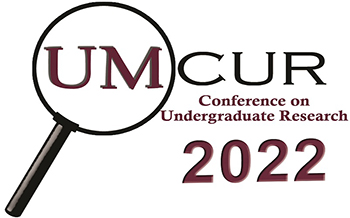Managing Culturally Significant Land: The Badger-Two Medicine Area as a Case Study
Project Type
Presentation
Faculty Mentor’s Full Name
Elena Bigart
Faculty Mentor’s Department
W.A. Franke College of Forestry
Abstract / Artist's Statement
Located in Helena-Lewis and Clark National Forest, Badger-Two Medicine area (B2M) spans 130,000 acres and is situated on the Rocky Mountain Front. The area borders the Blackfeet Reservation, Glacier National Park, and Great Bear and Bob Marshall Wilderness areas. B2M possesses immense cultural and spiritual importance for the Blackfeet tribe, who have occupied the area since time immemorial. The area is also one of the last remaining refuges for vulnerable fish and wildlife species such as westslope cutthroat, grizzly bears, wolverines, and mountain goats. Altogether, B2M possesses vast spiritual, cultural, and ecological importance throughout. However, extractive development, disagreements over protection status, and varying tribal and federal interests have created management complications within its boundaries.
Through an education-based project that focuses on communication and understanding, we explored current and future policy actions, opinions, and considerations for managing B2M’s culturally significant land. Our research involves interviewing tribal, federal, state, private, and non-profit stakeholders in the area to better understand where each group stands on current and future management actions in the area, and culturally significant land more broadly. Further, we will also host a Zoom panel in April consisting of individuals representing tribal, federal, conservation, and academic areas of expertise regarding B2M. In doing so, we hope to facilitate an informal yet informative discussion regarding management actions that inform the public and decision makers. We hope that our project will convey the complexities of managing culturally significant land, yet also inform others of the B2M’s management landscape. Communication between relevant groups and accessible information appears to be lacking, and this panel would help communicate the nuanced and broad distinctions between policy approaches to managing B2M. Through our case study, we also aim to provoke a wider discussion on policies pertaining to culturally significant land in other areas of the U.S. and globally.
Category
Franke Global Leadership Initiative
Managing Culturally Significant Land: The Badger-Two Medicine Area as a Case Study
UC 220
Located in Helena-Lewis and Clark National Forest, Badger-Two Medicine area (B2M) spans 130,000 acres and is situated on the Rocky Mountain Front. The area borders the Blackfeet Reservation, Glacier National Park, and Great Bear and Bob Marshall Wilderness areas. B2M possesses immense cultural and spiritual importance for the Blackfeet tribe, who have occupied the area since time immemorial. The area is also one of the last remaining refuges for vulnerable fish and wildlife species such as westslope cutthroat, grizzly bears, wolverines, and mountain goats. Altogether, B2M possesses vast spiritual, cultural, and ecological importance throughout. However, extractive development, disagreements over protection status, and varying tribal and federal interests have created management complications within its boundaries.
Through an education-based project that focuses on communication and understanding, we explored current and future policy actions, opinions, and considerations for managing B2M’s culturally significant land. Our research involves interviewing tribal, federal, state, private, and non-profit stakeholders in the area to better understand where each group stands on current and future management actions in the area, and culturally significant land more broadly. Further, we will also host a Zoom panel in April consisting of individuals representing tribal, federal, conservation, and academic areas of expertise regarding B2M. In doing so, we hope to facilitate an informal yet informative discussion regarding management actions that inform the public and decision makers. We hope that our project will convey the complexities of managing culturally significant land, yet also inform others of the B2M’s management landscape. Communication between relevant groups and accessible information appears to be lacking, and this panel would help communicate the nuanced and broad distinctions between policy approaches to managing B2M. Through our case study, we also aim to provoke a wider discussion on policies pertaining to culturally significant land in other areas of the U.S. and globally.
